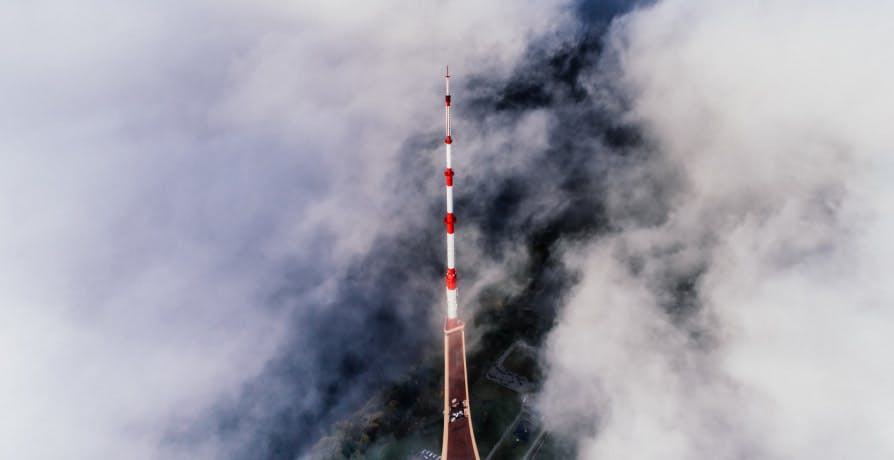ESG / CSR
Industries
Air Pollutants in the US: Issues and EPA's Proposed Rule



Air pollutants are causing distress across the country in terms of affecting pollution, the overall health of Americans, and even influencing political decisions.
As of most recently, the Biden administration proposed a new environmental regulation as an attempt to mitigate the emissions of more deleterious chemicals into the atmosphere, such as air pollutants that come from chemical plants – and it could potentially help in both reducing emissions and protecting the health of Americans across the country, especially for those who live close to sources where emissions are produced on a large scale or excessive industrial activity.
Why are air pollutants in the U.S. a serious problem, and how could the Biden administration of the EPA’s efforts to reduce air pollutants prove beneficial for Americans and the country as a whole on multiple levels?
What are air pollutants?
Air pollutants are the chemicals and particles that contribute to air pollution – which refers to the amount of air pollutants currently present in the atmosphere. Air pollution, caused by air pollutants, is often a direct cause of extensive energy use and industrial activities – but air pollution and air pollutants can also be produced from common, daily activities such as commuting to work by car or from air travel.
👉 The U.S. has made numerous attempts to improve the current situation regarding air pollutants, but the issue and threat of air pollutants has not yet cease to exist – as air pollutants are still threatening the health of both the planet and people.
The EPA, or the Environmental Protection Agency, has classified six pollutants to be officially deemed as air pollutants, which are carbon monoxide, lead, nitrogen oxide, ground-level ozone, particle pollution or particulate matter, and sulfur oxides. The EPA decided on these six official air pollutants through the use of scientific criteria and their long-term impact on human health.

Why are air pollutants a problem in the U.S.?
Air pollutants are a problem everywhere in the world, but especially in a country like the U.S. where healthcare rights are not equal amongst its citizens – and in a country where mass production doesn’t ever show signs of slowing down.
👉The main problem with air pollutants is the direct impact it has on both climate change and human health.
Air pollutants contribute to air pollution, which aggravate climate change by contributing to the warming of the ozone-layer – meaning that excessive emissions can provoke global warming, but air pollutants can elicit further rising in atmosphere temperatures.
Air pollutants have already contributed to almost seven million annual casualties, seeing as the health impacts of consistent exposure to air pollutants can become too much for the human body or healthcare system to handle.
Therefore, another big problem of air pollutants in the U.S. is the health implications they can cause, especially seeing as many chemical plants which are prone to emitting excessive amounts of air pollutants and contributing to air pollution exist in low-income areas. Residents of these financially unstable areas are often subject to the effects of asthma, other various respiratory diseases, and numerous other health problems as a result of air pollutants. Even more worrisome, the impact of air pollutants has been linked to cause new, rare types of cancers – meaning the negative effects of air pollutants are only putting more lives at risk.
👉 Think of going on a run on a windy day, and your running trail goes against the direction of the wind – meaning you have to exert extra force to ensure you maintain the same speed in miles per hour on your run. Once in a while, this is okay to do – but a strenuous workout like this on a daily basis will become too much for your body to physically handle. The same goes for air pollution and air pollutants: they aren’t going to cause long-term harm if someone is subjected to air pollutants every once in a while, but being subjected to air pollutants on a daily basis can begin to have an effect on your health.

Why has the U.S. failed to control the negative impact of air pollutants thus far?
It may seem like a simple task to dictate the emissions created by air pollutants across the country, but passing environmental legislation has proven difficult for the Biden administration – such as with the recent G.O.P energy bill. Even when legislation is passed or repealed for the sake of the environment, there is almost always backlash on how it could hinder the country’s economy – such as with the repeal of the Roadless Rule for the Tongass National Forest. This has happened in the past when Obama tried to create better regulations for controlling power plants that made use of mercury, which is also considered a toxic air pollutant.
Despite past failed attempts, the Biden administration has made and is continuing to make an effort in rectifying the current problems with air pollutants – such as by recently announcing that coal and oil-fired power plants will be asked to reduce their emissions and the amount of air pollutants they create. Some of the most notable air pollutants created by these power plants include mercury, which has been shown to hinder child development.
Luckily, the efforts on behalf of those trying to control air pollutants could finally have their moment in the sun thanks to the new proposed rule by the EPA.

What is the EPA’s proposed rule for air pollutants?
The Biden administration isn’t the only hope for the extensive amount of air pollutants in the air across the country, but the EPA, or the Environmental Protection Agency – is also making an effort to reduce the negative effects air pollutants have on the environment and the health of Americans.
The new rule by the EPA would entice chemical plants to oversee in detail how many air pollutants they are responsible for producing, and would engage and require the participation of over 200 facilities across the country: most notably in the south, alongside the Gulf Coast, and the midwest and mid-atlantic regions. However, the most notable thing to note about this new rule to avoid toxic air pollutants on behalf of the EPA is that it would update regulations concerning emissions produced from chemical plants that have not been adjusted for almost 20 years – a timespan in which climate change and subsequently climate legislation have both altered in importance drastically.
The proposed rule by the EPA on mitigating harmful air pollutants amongst chemical plants would be to work against the impact of air pollutants in addition to the efforts made by the Biden administration to shed light on the unequal impact caused by chemical plants – especially for those who live near these facilities which emit air pollutants on a daily basis. Even more worrisome, these neighborhoods that are often subjecting surrounding residents to the negative effects of air pollutants are low-income areas that cannot financially afford to deter or protect themselves from the health hazards of air pollutants.
This new rule regarding air pollutants would make history in more ways than one – seeing as the new regulation regarding air pollutants would serve as the first effort on behalf of the EPA to implement an industry-wide legislation regarding air pollutants rather than seeking to control the activities of individual power plants or areas. It will help to prevent future lawsuits, some of which have occurred – due to nearby facilities subjecting their residents to respiratory diseases and rare cancers.
👉 Ultimately, this new rule for air pollutants on behalf of the EPA will strive to encourage the transition towards the use of clean energy, reduce emissions, and protect the health of Americans.
How guaranteed is it that this new rule regarding air pollutants will help to protect Americans from the harmful effects of air pollutants?

How could the EPA’s proposed rule for air pollutants prove difficult or ineffective?
It is clear that more environmental legislation is necessary to control the negative impacts created by air pollutants, but it isn’t all up to the EPA – but the facilities required to comply with the new proposed rule regarding air pollutants themselves.
This is because the new air pollutants rule would will demand large chemical plants to alter much of their set tendencies: such as the use of chemicals like benzene, chloroprene, and ethylene oxide that are used to make plastic – another massive contributor to greenhouse gas emissions. Facilities will have to make a great effort to prevent additional air pollutants from escaping their production areas: such as by ensuring that storage tanks are secure and taking additional time to prevent and monitor future and existing chemical leaks.
In addition to this, many have commented on their fears of the EPA rushing into this new air pollutants rule – such as the American Chemistry Council, who have noted that despite the scientific data to support the efforts for the rule against air pollutants, that the new rule may not be fully developed or ready to be effective as the EPA might think.
The new rule on air pollutants proposed by the EPA is certainly revolutionary in the sense that it will seek to collectively manage power plants that emit air pollutants in the most standardized approach yet to date – but that standardized approach may not be enough to reduce the emission or health risks the EPA or Biden administration is looking to.
However, this doesn’t mean the new rule regarding air pollutants should remain unsupported. In fact, its existence and passing is more pivotal than ever.

What else could be done to deter the impact of air pollutants?
Air pollutants aren’t something that will go away overnight without incentive from authorities, much like climate change isn’t likely to make a 180 degree turn without the help of environmental legislation and new limits on emission production. However, even if the government doesn’t implement strong enough action to deter the impacts of air pollutants, there are things that people can do to protect themselves from the negative effects of air pollutants.
First off, if you live in an area with a high amount of air pollutants present in the atmosphere, it is best to stay indoors as much as you can and keep the windows closed until the level of air pollutants has decreased and the air quality has improved. In the meantime, relocating to public places like a library or coffee shop with better ventilation may help keep symptoms of air pollutants at bay. Also, in a similar way to a heatwave, it is best to avoid outdoor strenuous activities – as breathing in high levels of air pollutants will wreak more havoc on your body trying to recover from exercise than on a day with less air pollutants present in the air.
However, it shouldn’t be the responsibility of Americans to protect themselves from the effects of air pollutants – and hopefully the new proposed rule by the EPA to reduce the impact of air pollutants can succeed in reducing emissions and safeguarded the lives of Americans.
What about Greenly?
If reading this article about air pollution in the U.S. has made you interested in reducing your carbon emissions to further fight against climate change – Greenly can help you!
The EPA’s potential rule for air pollutants in the U.S. is just one of the many environmental policies and pieces of climate legislation being developed and proposed in order to combat climate change. Check out our legislation tracker here to see which rules your company has to adhere to.
Greenly can help you make an environmental change for the better, starting with a carbon footprint assessment to know how much carbon emissions your company produces.


